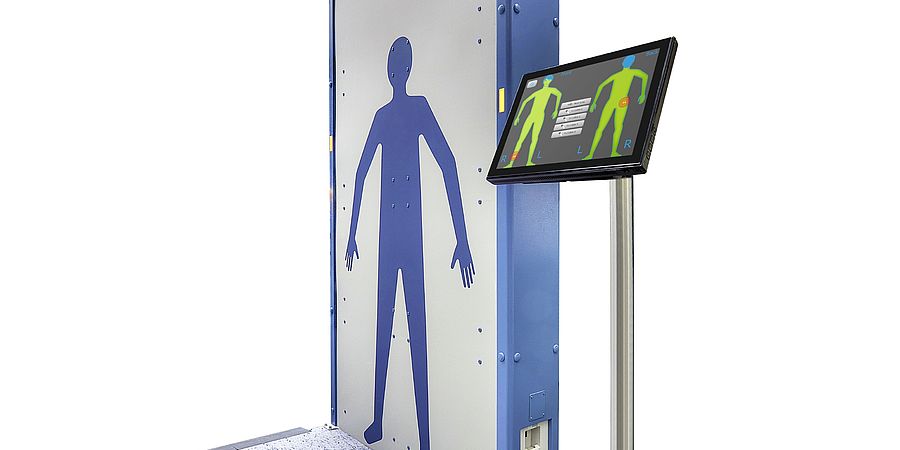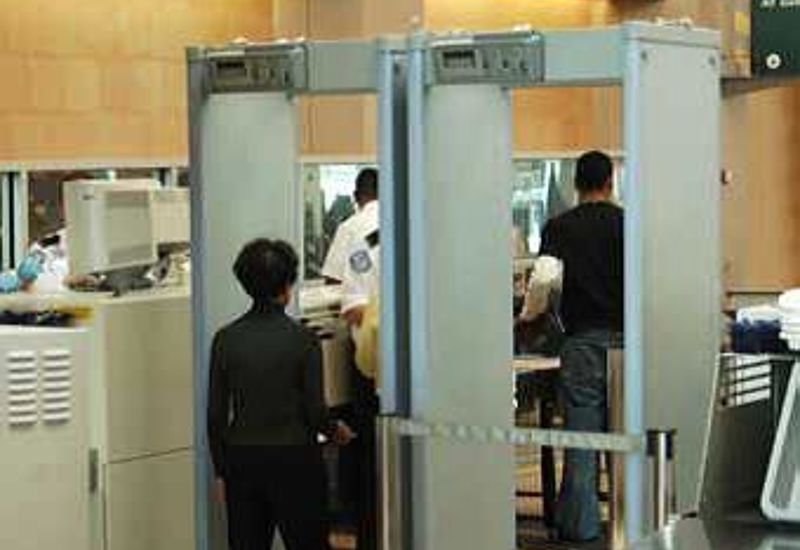Safe airport scanners

Challenge
Terahertz (THz) lasers are finding new uses in non-destructive material testing and security scanning. The long wavelength radiation these lasers emit is ideal for both applications as it can pick-up near surface defects or substances hidden under clothes which pose security risks. Manufacturers of materials are keen to embrace non-invasive and non-contact detection methods that offer higher spatial resolution than existing radio frequency techniques, whilst increasing security at airports requires new imaging technology to provide more reliable passengers scans.
Devices using terahertz radiation have great potential for use in security scanning but their implementation relies on accurate assessment of any risks the radiation may pose to either operators or passengers. Relating the terahertz power to potential heating of skin is key to assessing scanner safety and relies on accurately knowing the radiation’s intensity. Improved laser detector calibration and reliable ways to transfer this to the scanner production line form the first step towards ensuring terahertz scanning is safe.
Solution
The EMRP Project, Microwave and terahertz metrology for homeland security developed a range of complementary methods and facilities for calibrating microwave and terahertz detectors and used a modelling approach to demonstrate that the skin heating induced by microwave and terahertz radiation is not hazardous.
One method developed to calibrate units on the scanner production line uses pyroelectric detectors which give a reliable response across the entire terahertz range. Unlike other detectors these are not effected by humidity or temperature so can be operated with confidence in many different environments. This makes pyroelectric detectors suitable for taking laboratory based power calibrations to laser manufacturer’s in-house equipment.
To determine any potential harmful effects from THz radiation, the project developed a modelling approach and tested its findings experimentally using gels which simulate the skin. These measurements confirmed the model’s predictions of skin heating and demonstrated that terahertz radiation is safe for use.
Impact
SLT Sensor- und Lasertechnik GmbH supplies laser measurement products and manufactures the pyroelectric detector characterised in the project for use as a calibration transfer instrument. Because of using the new terahertz calibration facilities, SLT’s customers can now have confidence in the accuracy of their in-house lasers power. This enables their terahertz radiation products to be accurately measured and accurate risk assessments for their use to be made. The importance of this detector was recognised through an AMA Association for Sensors and Measurement innovation award for outstanding research and development work in sensor and measuring technology. SLT are current making further upgrades to improve the pyroelectric detectors usability.
For the first time, it is possible to accurately measure terahertz laser power and ensure measurements are comparable. Access to calibrated detectors and validated models allows manufacturers of terahertz imaging technologies to demonstrate the safety of operators and the public through a traceable measurement chain. Being able to demonstrate that terahertz radiation is safe, and having confidence in the performance of lasers, will spur greater adoption of terahertz technology in security applications, health imaging and process quality control.

